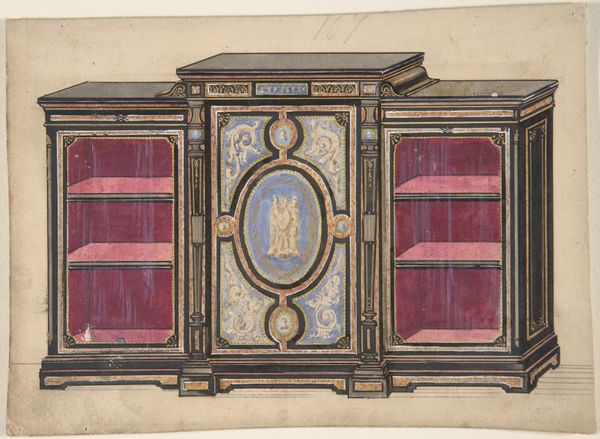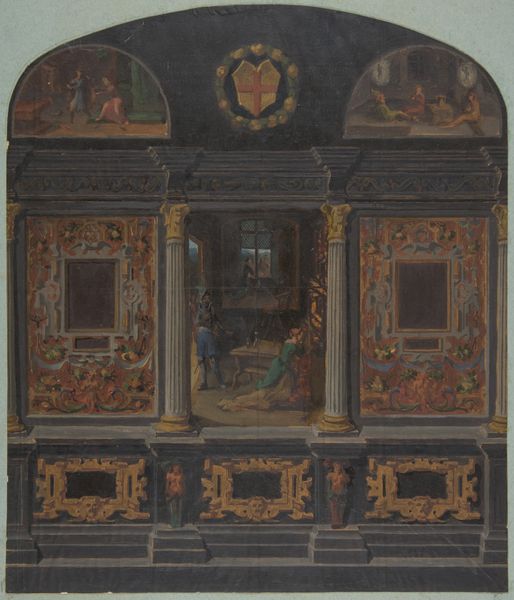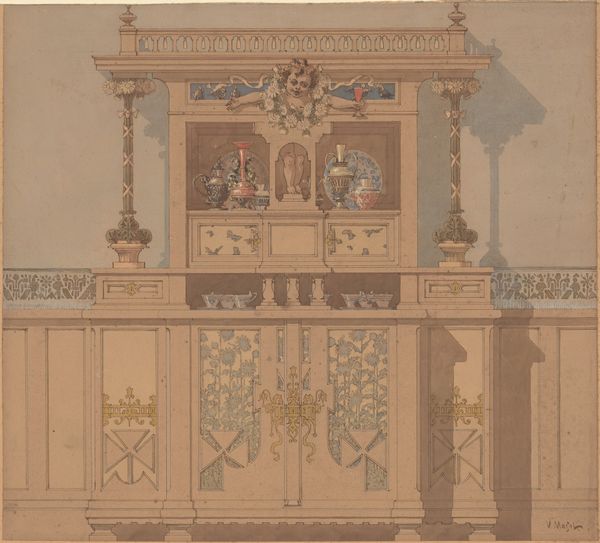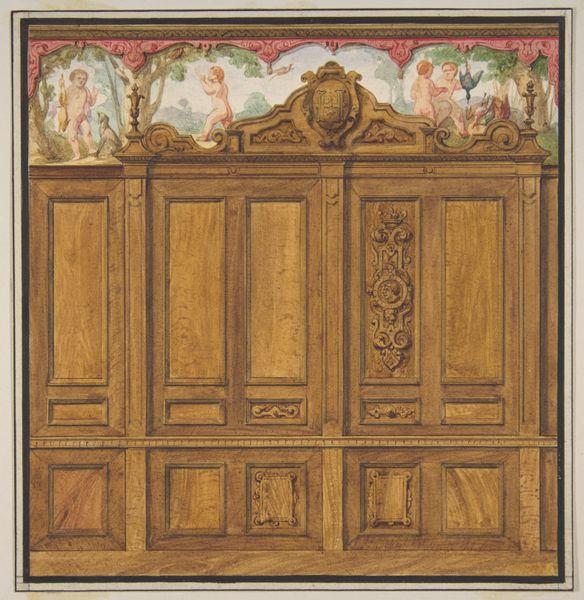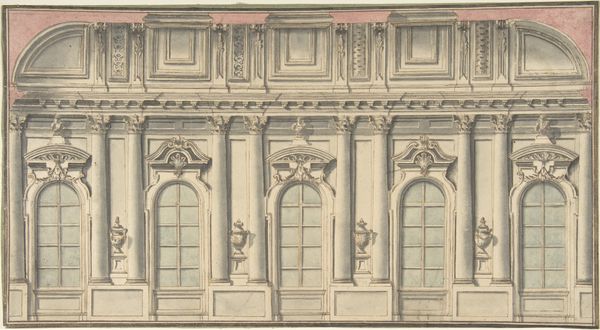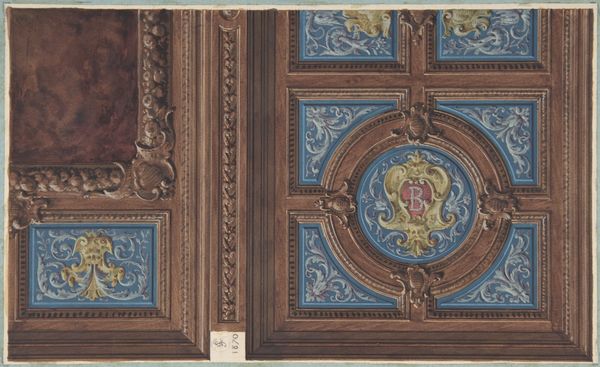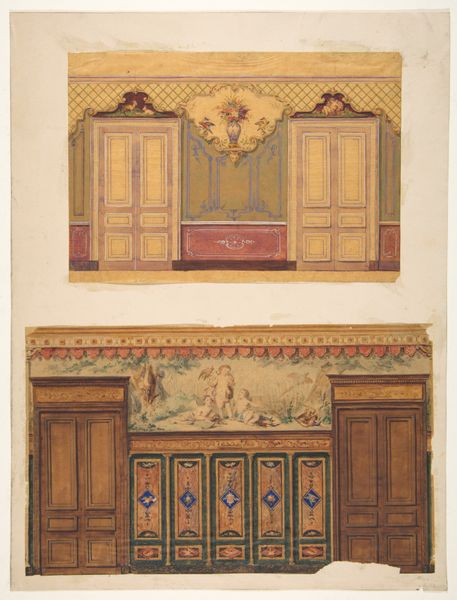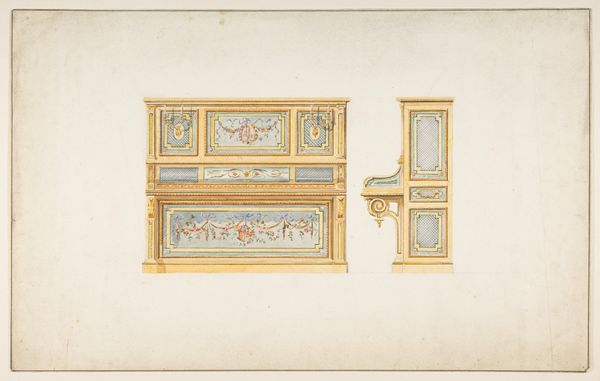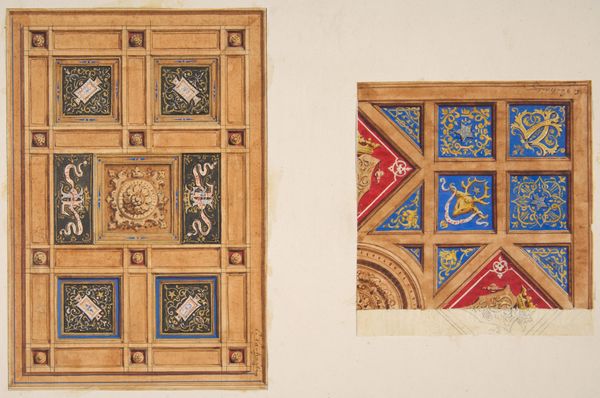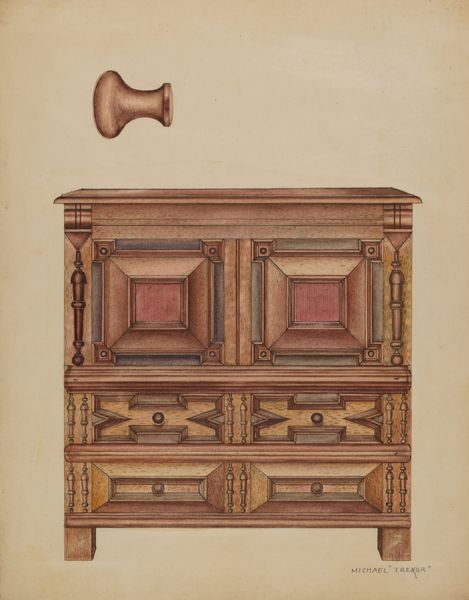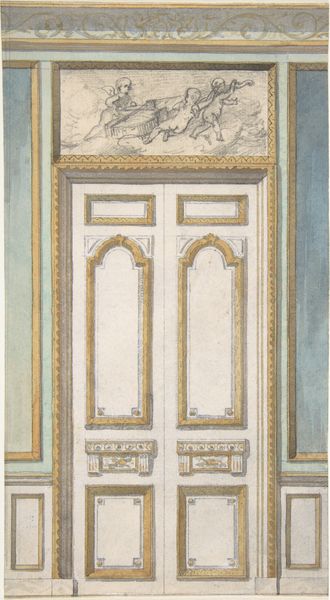
Design for a room with wood panels inset with paintings and a heavily-carved double door 1830 - 1897
0:00
0:00
drawing, mixed-media, print, wood, architecture
#
drawing
#
mixed-media
#
toned paper
# print
#
11_renaissance
#
oil painting
#
wood
#
history-painting
#
watercolor
#
architecture
Dimensions: Overall: 10 3/8 x 14 3/4 in. (26.4 x 37.5 cm) image: 6 7/8 x 11 5/16 in. (17.5 x 28.8 cm)
Copyright: Public Domain
Editor: This mixed-media drawing, "Design for a room with wood panels inset with paintings and a heavily-carved double door" created by Jules-Edmond-Charles Lachaise sometime between 1830 and 1897, really overwhelms me with its intricate details. What symbolic meanings are embedded in this elaborate design? Curator: The overwhelming detail you note actually hints at its purpose: this design speaks of power, lineage and refined taste. Think of the symbols: the figures above the door, rendered with almost Byzantine flatness. They act like talismans of sorts, markers of religious authority and protection. Then look at the crest above – can you see it? That’s a statement of family pride, of historical rootedness in this particular bloodline. The hunting scene further to the left also refers to their ability to rule, by their mastery over life and death. Editor: That makes me think, this design presents a clear visual statement. I’m also curious about those decorative carvings... How do they function in this symbolic ecosystem? Curator: Those carvings are the echo chamber. They reinforce, visually, what is already suggested by the main symbolic players. Acanthus leaves traditionally signal status and enduring life, while the putti introduce lighthearted themes such as love or grace. What feelings come to mind when you look at the colour palette here? Editor: There’s a stark contrast between the wooden elements and the paintings, giving it an almost dreamlike quality. It feels… deliberately artificial. Curator: Exactly! It isn't aiming at photorealism; this is all about carefully constructing a specific, impressive identity. Lachaise is inviting viewers to become active participants, decoding a story about the home, or rather, the family whose story the space aimed to reflect and celebrate. Editor: It’s interesting to consider it as a constructed story. I never considered how much identity could be projected through interior design. Curator: Indeed. This design offers a window into the symbolic language of the elite in the 19th century, as well as into how powerful architecture might play a critical role in shaping collective cultural identity.
Comments
No comments
Be the first to comment and join the conversation on the ultimate creative platform.
